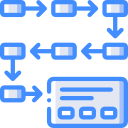People, Change Management, and Trust
One team piloted automated validations on just overtime rules. Early wins built momentum: fewer disputes and cleaner reports. They expanded to deductions and garnishments, then audits. Start small, celebrate results, and invite feedback. What would your perfect starter pilot look like?
People, Change Management, and Trust
Short, scenario-based lessons beat lengthy manuals. Teach how to triage alerts, approve exceptions, and interpret dashboards. Reinforce with job aids and shadow sessions. Ask your team what confuses them most, then design training around those real, recurring situations.




